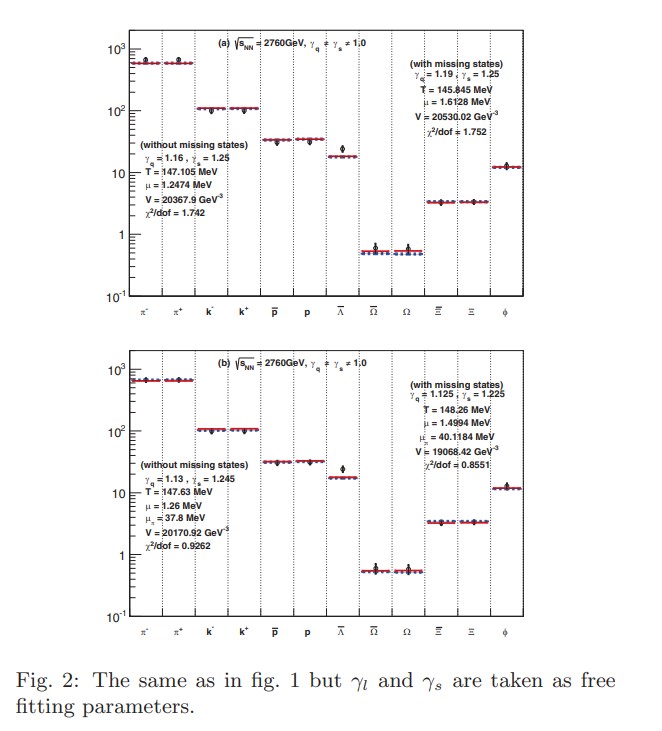

Particle yields and ratios within equilibrium and non-equilibrium statistics
In characterizing the various yields and ratios of well-identified particles in the ALICE experiment, we utilize extensive additive thermal approaches, to which various missing states of the hadron resonances are taken into consideration as well. Despite some non-equilibrium conditions that are slightly driving this statistical approach away from equilibrium, the approaches are and remain additive and extensive. Besides van der Waals repulsive interactions (assuming that the gas constituents are no longer point-like, i.e., finite-volume corrections taken into consideration), finite pion chemical potentials as well as perturbations to the light and strange quark occupation factors are taken into account. When confronting our calculations to the ALICE measurements, we conclude that the proposed conditions for various aspects driving the system out of equilibrium notably improve the reproduction of the experimental results, i.e., improving the statistical fits, especially the finite pion chemical potential. This points out to the great role that the non-equilibrium pion production would play, and the contributions that the hadron resonance missing states come up with, even when the principles of statistical extensivity and additivity are not violated. These results seem to propose revising the conclusions propagated by most of the field, that the produced particles quickly reach a state of local equilibrium leading to a collective expansion often described by fluid dynamics. This situation seems not to remain restrictively valid, at very large collision energies. © CopyrightEPLA, 2019.